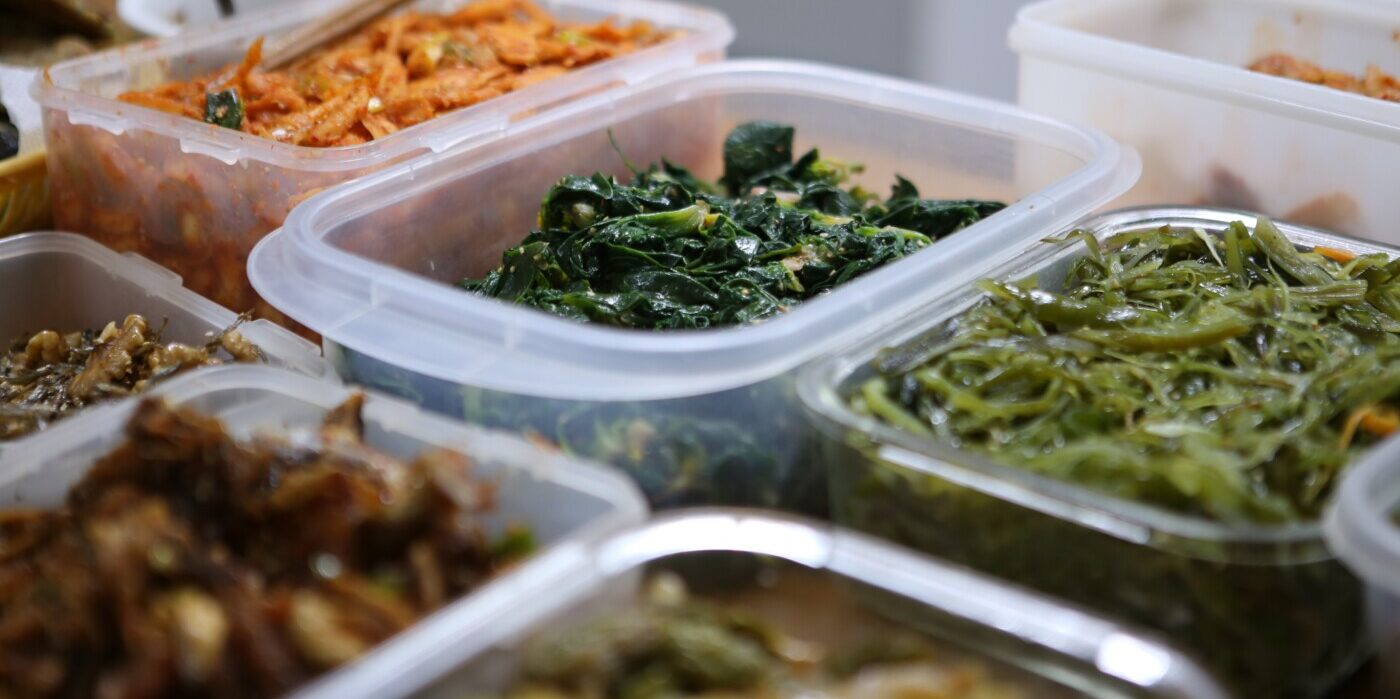Around the world in 80 dishes: kimchi
Kimchi, which is one of the most iconic dishes originating from South Korea, has become popular worldwide due to its unique taste and the West’s rising interest in Korean culture. You’ve probably come across it if you’ve ever eaten at a Korean restaurant, Asian fusion place, or taken an interest in eating ‘health’ foods. But what exactly is kimchi and why is it so popular?
Putting it simply, kimchi is a spicy fermented vegetable, commonly made with napa cabbage, and usually enjoyed as a side dish alongside most meals in Korea. According to the International Monetary Fund (IMF), kimchi was consumed daily by 95% of Koreans in 2014, meaning that the country consumes 2 million tons annually. Although it’s often imported nowadays, many Koreans retain the ancient tradition of ‘gimjang’, the process of making kimchi with friends and family in late autumn. Back in the day, chopped vegetables would be stored in big clay pots in the ground while they fermented, but now people will keep kimchi in a secondary refrigerator or in large jars on balconies.
Whether it’s on the frontlines […] or out of this world, everywhere that South Korea goes, fermented vegetables always seem to follow.
While kimchi as a food has a long history, the word is relatively modern and evolved alongside the Korean language, although the origins are traceable. One of the earliest forms of the word is ‘timchai’, which means ‘submerged vegetable’ in reference to the fermentation process, and dates from the Middle Korean period. Meanwhile, the food itself was created as a practical response to Korea’s long, harsh winters (before the invention of refrigeration) over 4,000 years ago. As it was hard to produce crops, Koreans needed a nutritious food that could be produced in large quantities and be stored throughout the winter. Kimchi was the solution to the problem.
It’s unsurprising, given its origin story and deep rooting in family traditions, that kimchi remains an integral part of South Korean culture. Whether it’s on the frontlines (American help was recruited to make sure South Korean troops could obtain kimchi in the field during the Vietnam War) or out of this world, everywhere that South Korea goes, fermented vegetables always seem to follow.
In 2008 the first South Korean astronaut was preparing to go to space, but there was one issue: there was no such thing as ‘space kimchi’ yet. Most countries will develop versions of their national (or popular) dishes to send into space with their astronauts (Italy sent an espresso machine, China made specially processed yuxiang pork, and Russia produced over 300 dishes for consumption in space). Work on ‘space kimchi’ started in 2003 and took over one million dollars in funding, but the research team finally found a way to kill the bacteria with radiation while retaining 90% of the original taste.
During this research, it was also discovered how to slow down the fermentation of kimchi for a full month, which made it easier to export the food around the world. Previously, the short shelf-life had made it very costly to sell abroad. This was a positive for South Korea and its exports, as kimchi was beginning to finally gain popularity outside of Asia, likely due to increased globalisation and the ‘Korean Wave’.
Over 30 years later, it’s undeniable that kimchi has succeeded as a global ‘ambassador’, as it can now be purchased in any supermarket
It had first been introduced to the international community at the 1988 Seoul Olympics, although the Olympic Committee worried that the smell might alienate foreigners—to combat this, Koreans were instructed to brush their teeth after every meal if they worked with visitors. However there was no reason to worry, as the unique smell and taste seemed to interest visitors rather than making the food unpalatable. Over 30 years later, it’s undeniable that kimchi has succeeded as a global ‘ambassador’, as it can now be purchased in any supermarket.
A rise in ‘healthy eating’ culture has worked in kimchi’s favour, as the fermented foods can improve the health of your gut—so vital to our wellbeing that it’s referred to as the ‘second brain’. Each gram of kimchi contains over 800 million immunity-boosting lactic acid bacteria, which are great for your microbiome and could explain why South Koreans are so healthy.
Despite its humble origins as a response to bad winters and difficult farming conditions, it can’t be denied that kimchi is now a decidedly in-vogue food. Endorsed by food bloggers, restaurant chains, and even Michelle Obama, the fermented dish has become one of the most iconic symbols of South Korea and a popular food around the world.

Comments